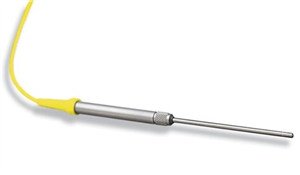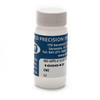

ISO-HPO-2
ISO-HPO-2 Hydrogen Peroxide Sensor - 2mm
- Overview
- Specifications
- Accessories
- Citations
- Related Products
Overview

There are 1 images available to view - click to enlarge and scroll through the product gallery.
ISO-HPO-2 Instruction Manual
/ Download as PDF
- For use with Apollo1000, Apollo4000, TBR4100 and TBR1025
- Response Time: < 5s (90%)
- Detection Limit: < 100 nM to 100 μM (100 mM custom)
- Drift: < 0.2pA/min.
- Sensitivity: 8 pA/nM
- Application: Cell Cultures
- Package of 1
Details
Sensing Hydrogen Peroxide
Hydrogen Peroxide is produced in biological systems by controlled pathways at low concentrations that impact on cell signaling. At higher concentrations inflammatory cells produce local intense amounts of this oxidant to kill pathogens. In the progress of human disease, uncontrolled formation of hydrogen peroxide from the mitochondrial respiratory chain and enzymes, such as xanthine oxidase, can occur (Prof. Victor Darley-Usmar, Univ. of Alabama, personal communication). Despite the recognized importance of this oxidant in biology real-time measurements at low concentration have been difficult. The hydrogen peroxide sensors developed by WPI are designed to compliment existing high sensitivity fluorescent approaches with direct quantitative measurement in biological samples in the low nM range.
Features
The ISO-HPO-2 is a 2.0 mm stainless steel sensor, with replaceable membrane sleeves (#600012) and an internal refillable electrolyte (#100042). The sensor is designed for use in cell cultures and similar applications.
Design
These sensors incorporate WPI's proprietary combination electrode technology whereby the hydrogen peroxide sensing element and separate reference electrode are encased within a single Faraday-shielded probe design. This design has been shown to enhance performance during measurements and minimizes overall sensor size.






Request
Catalogue
Chat
Print